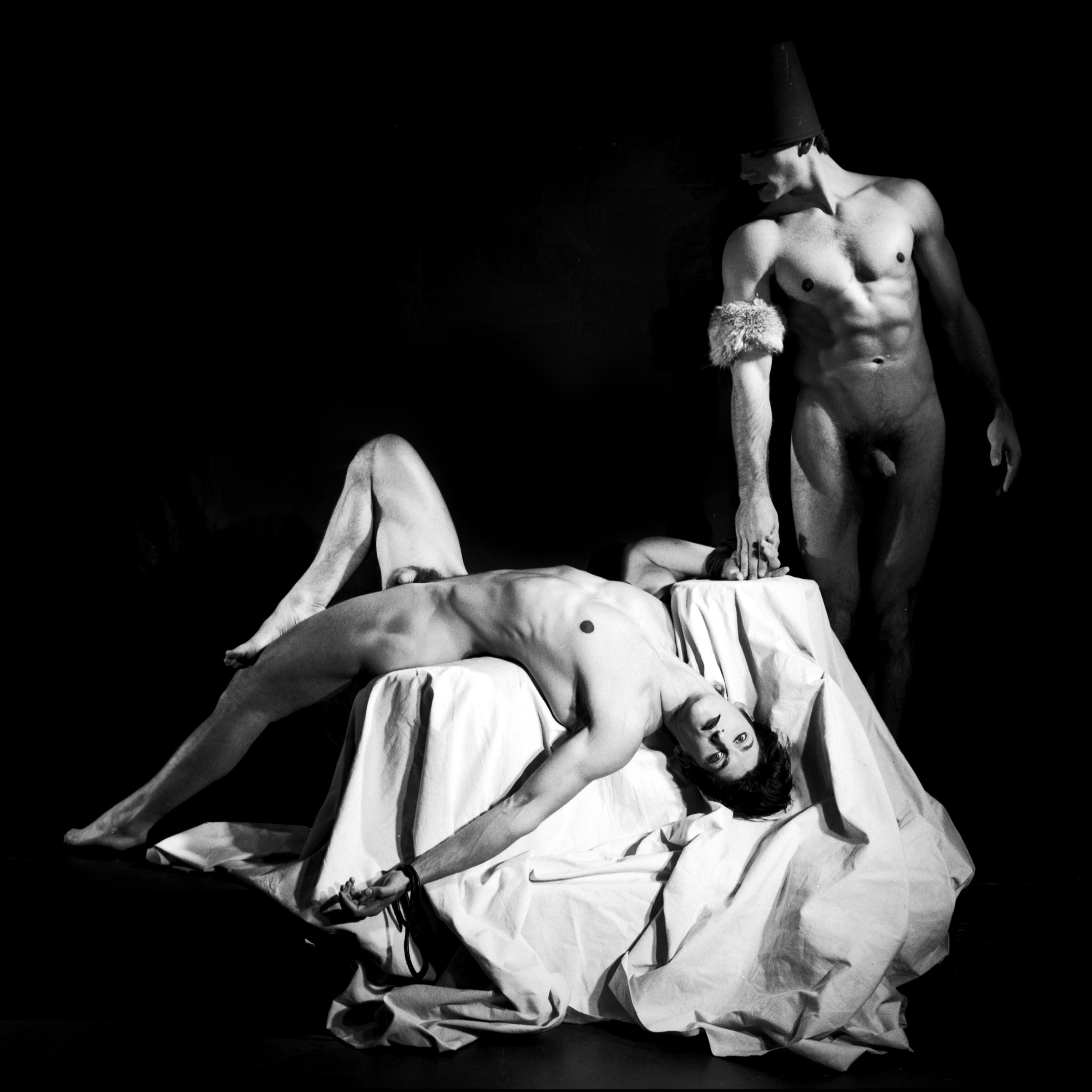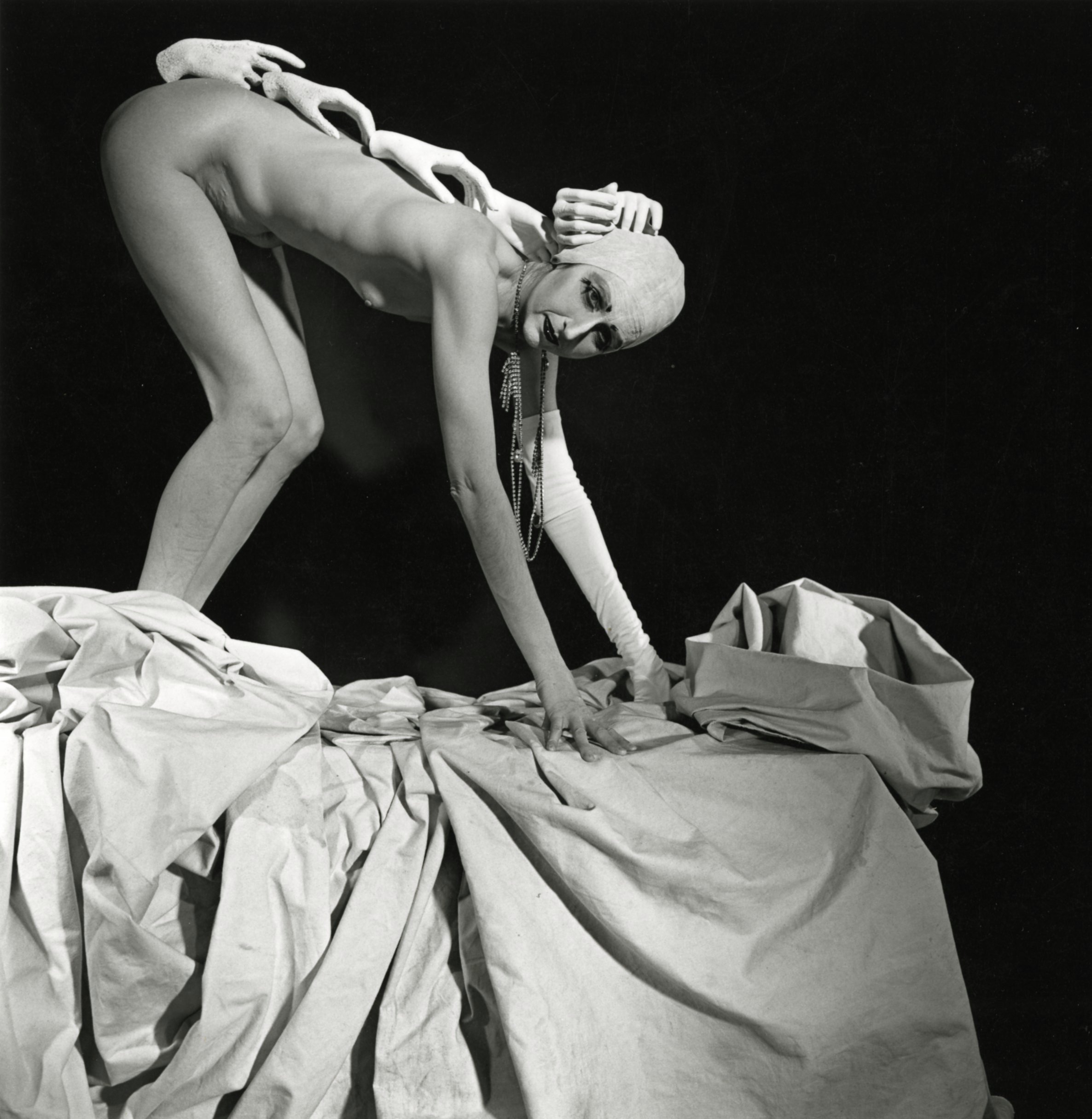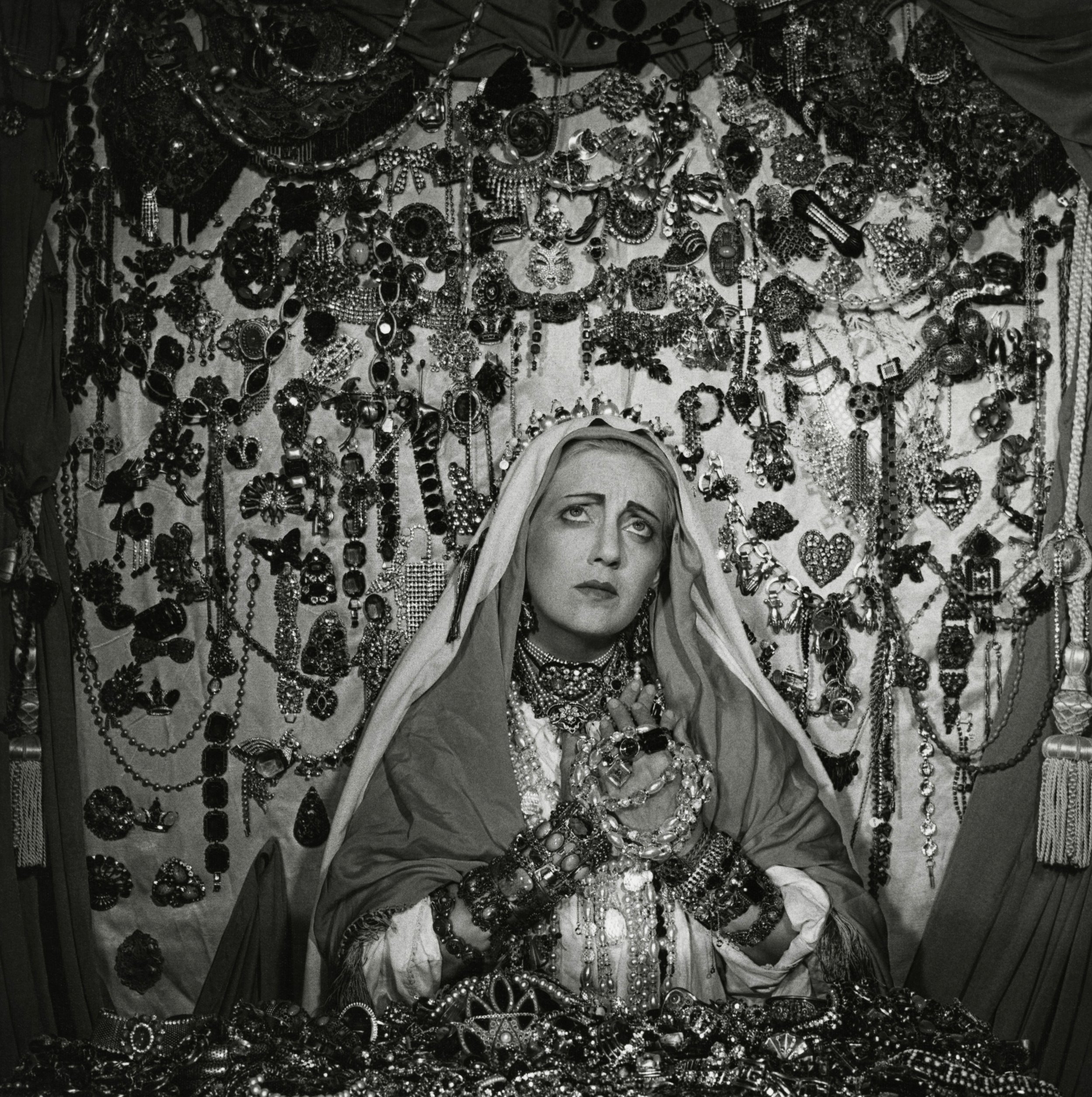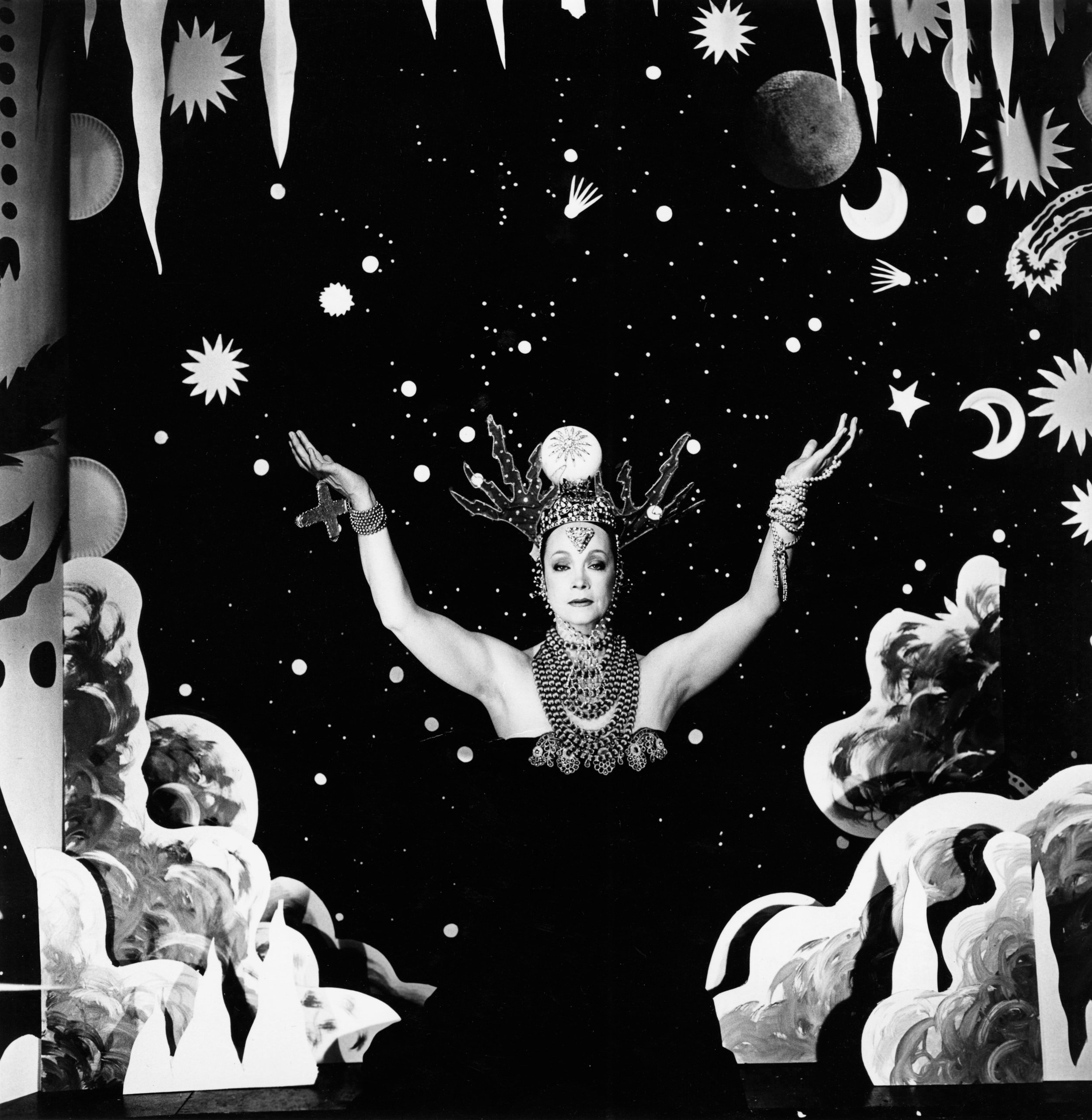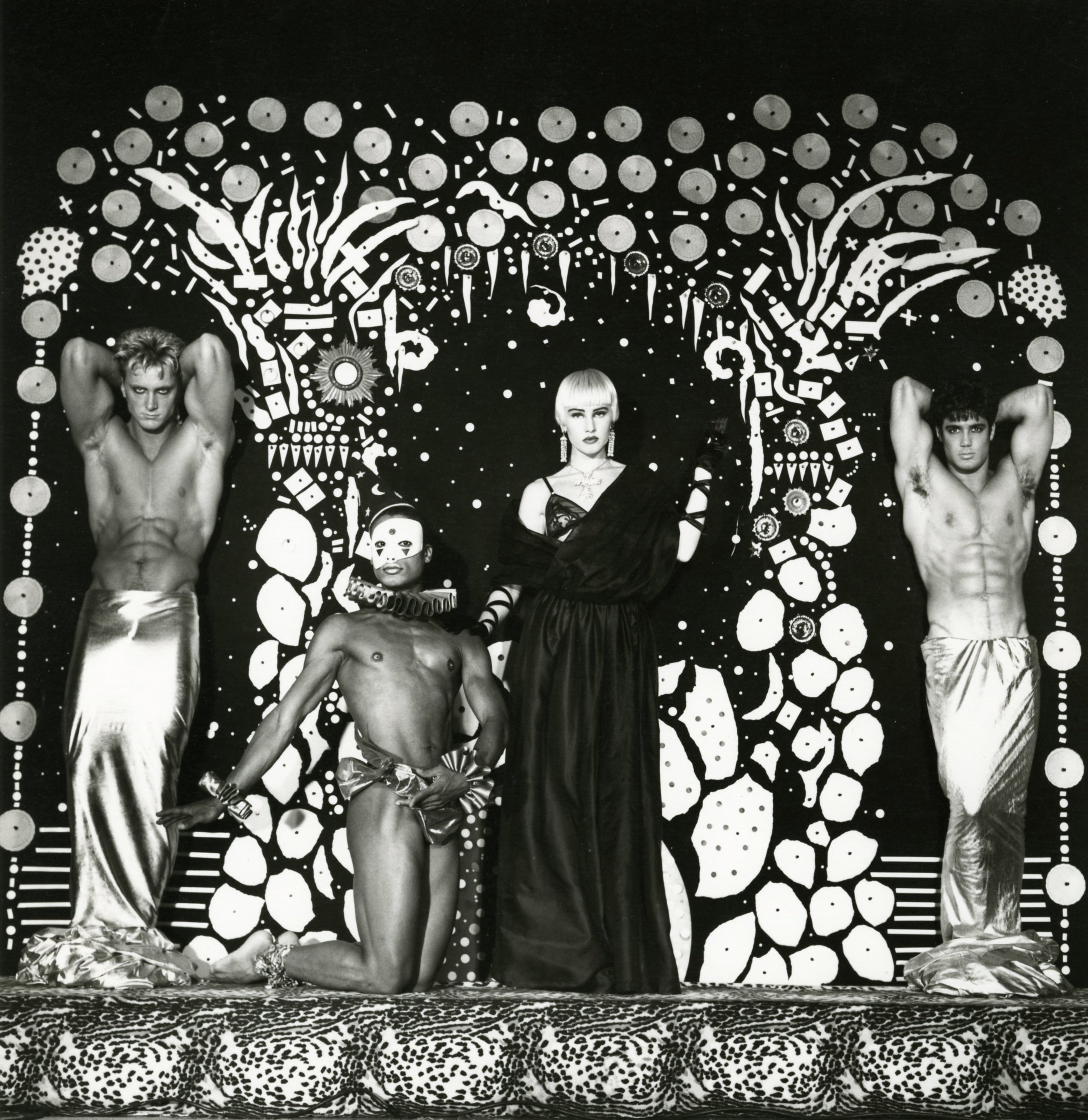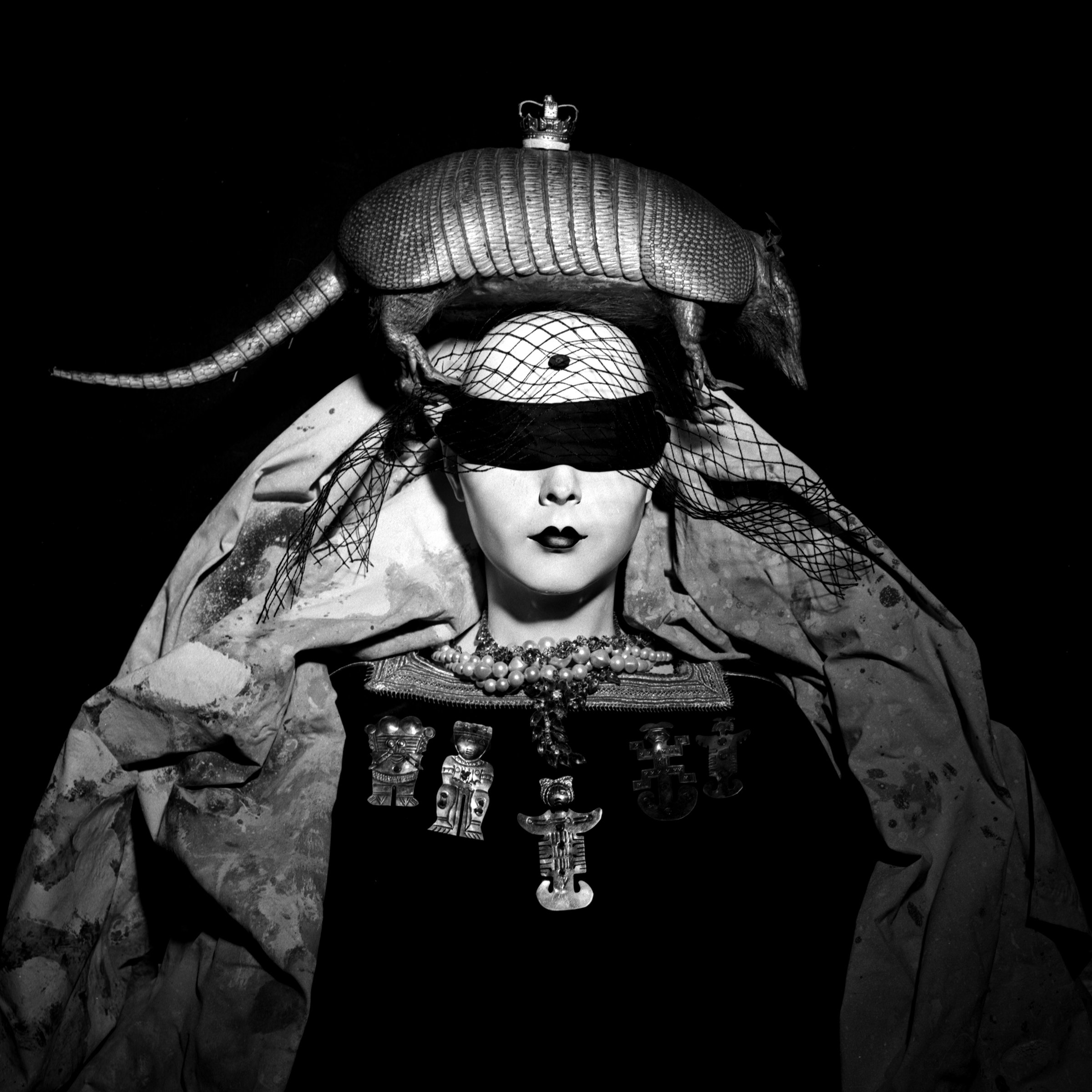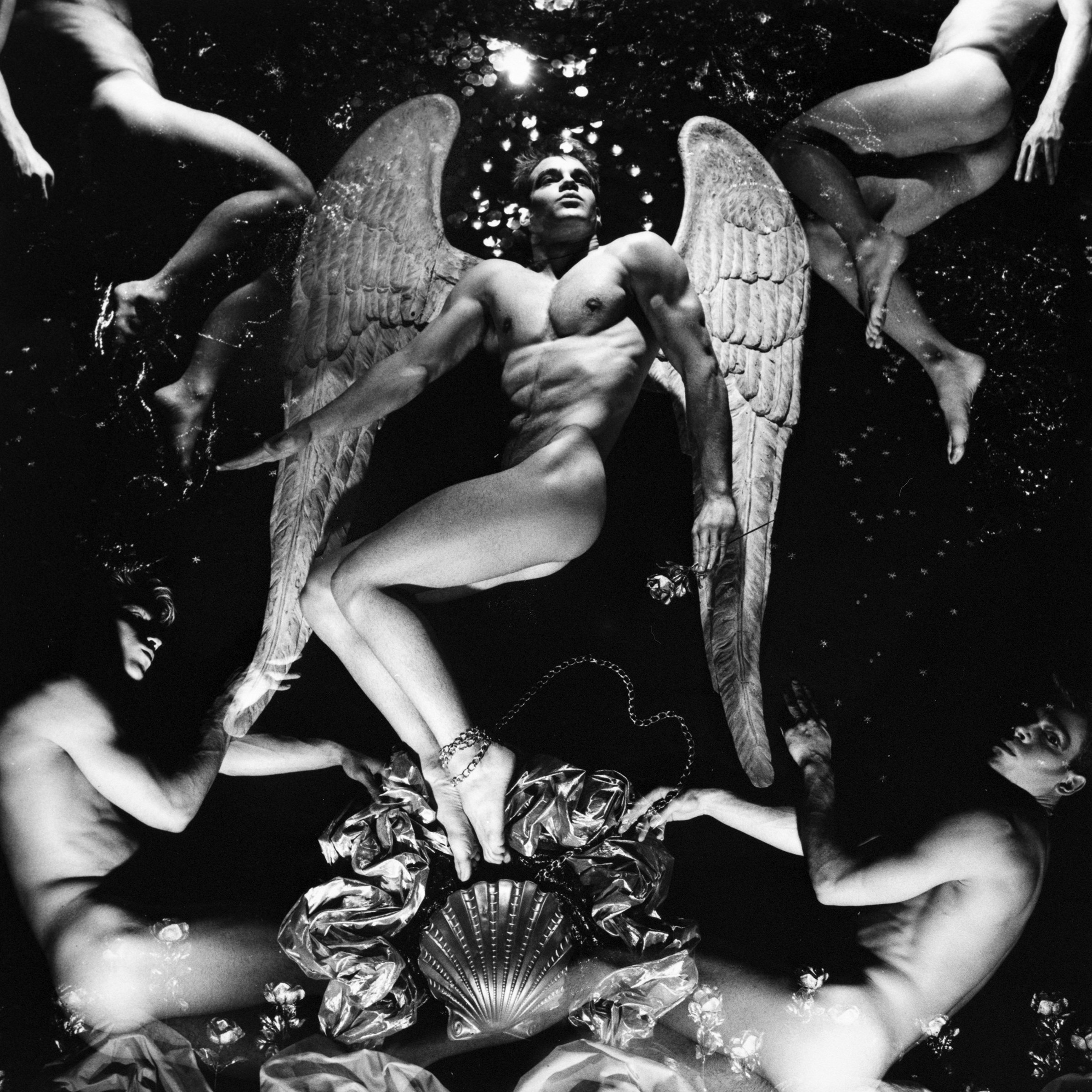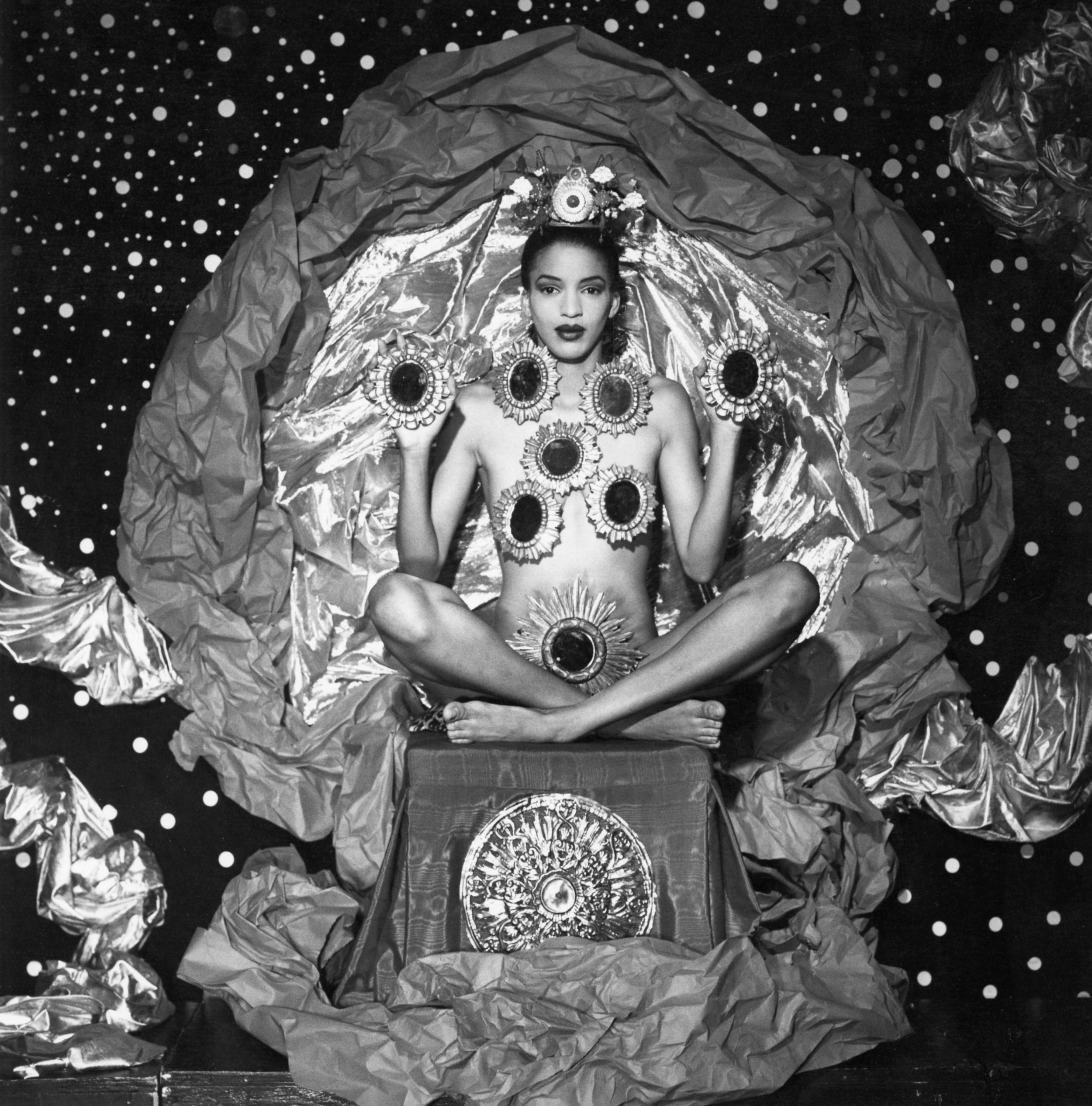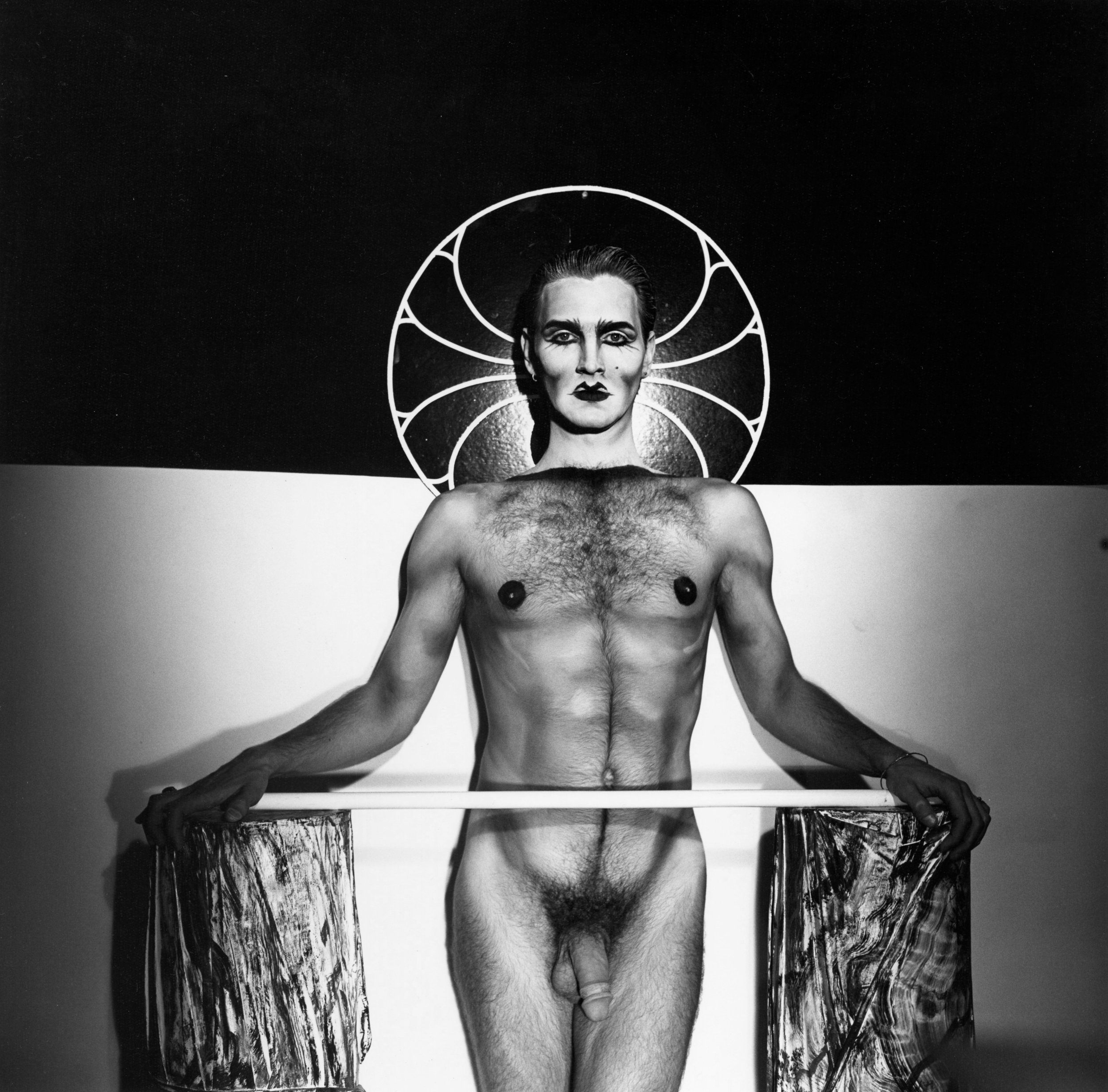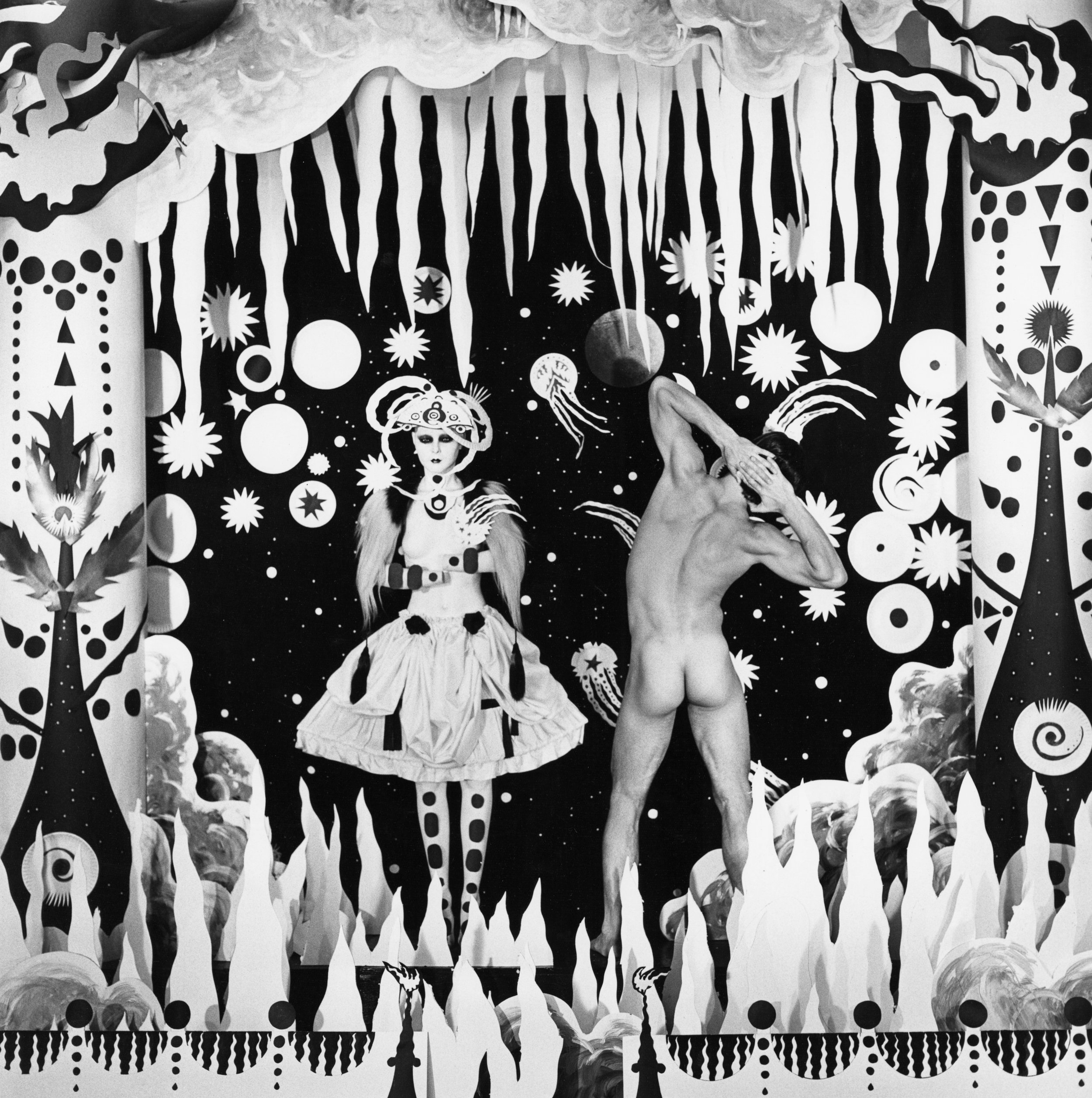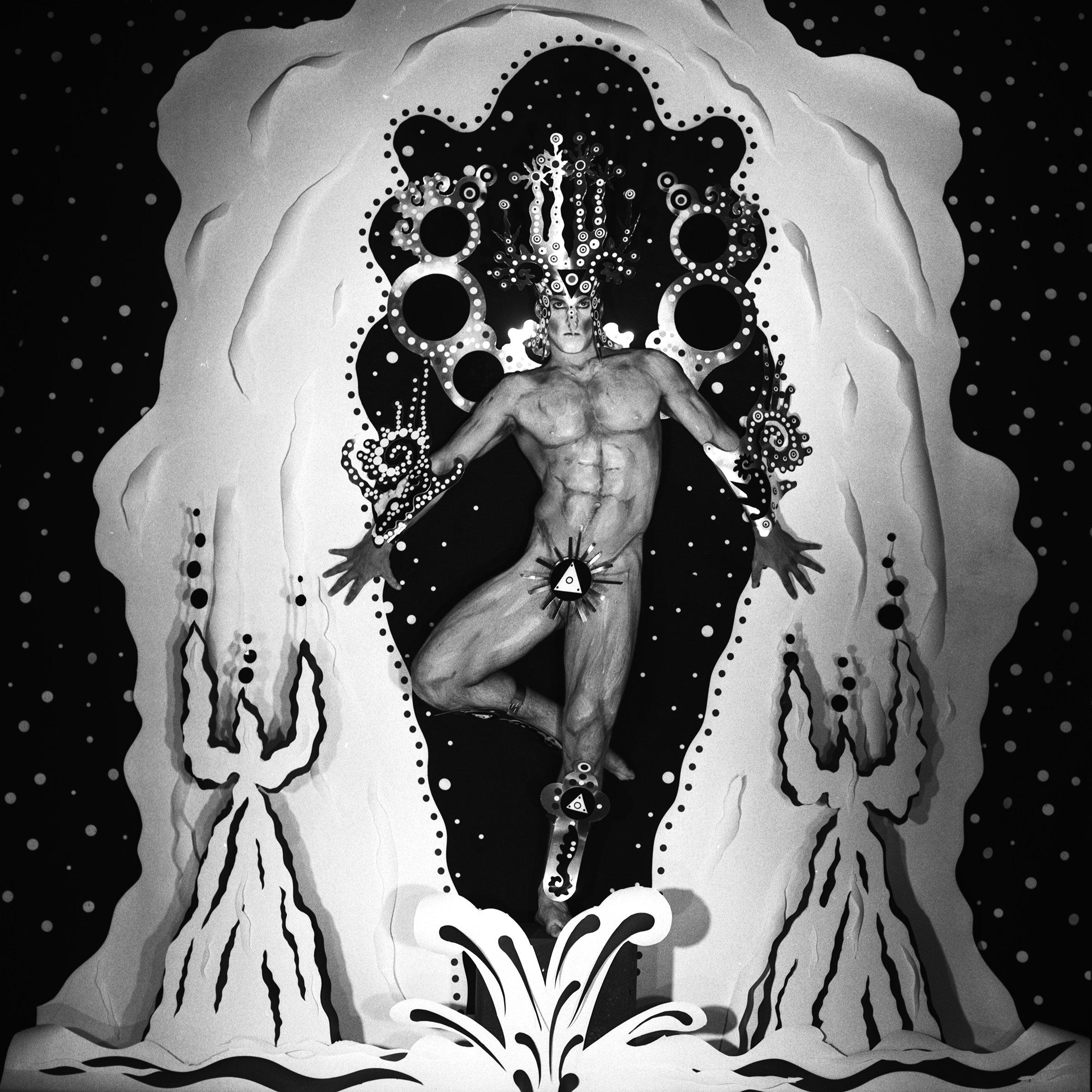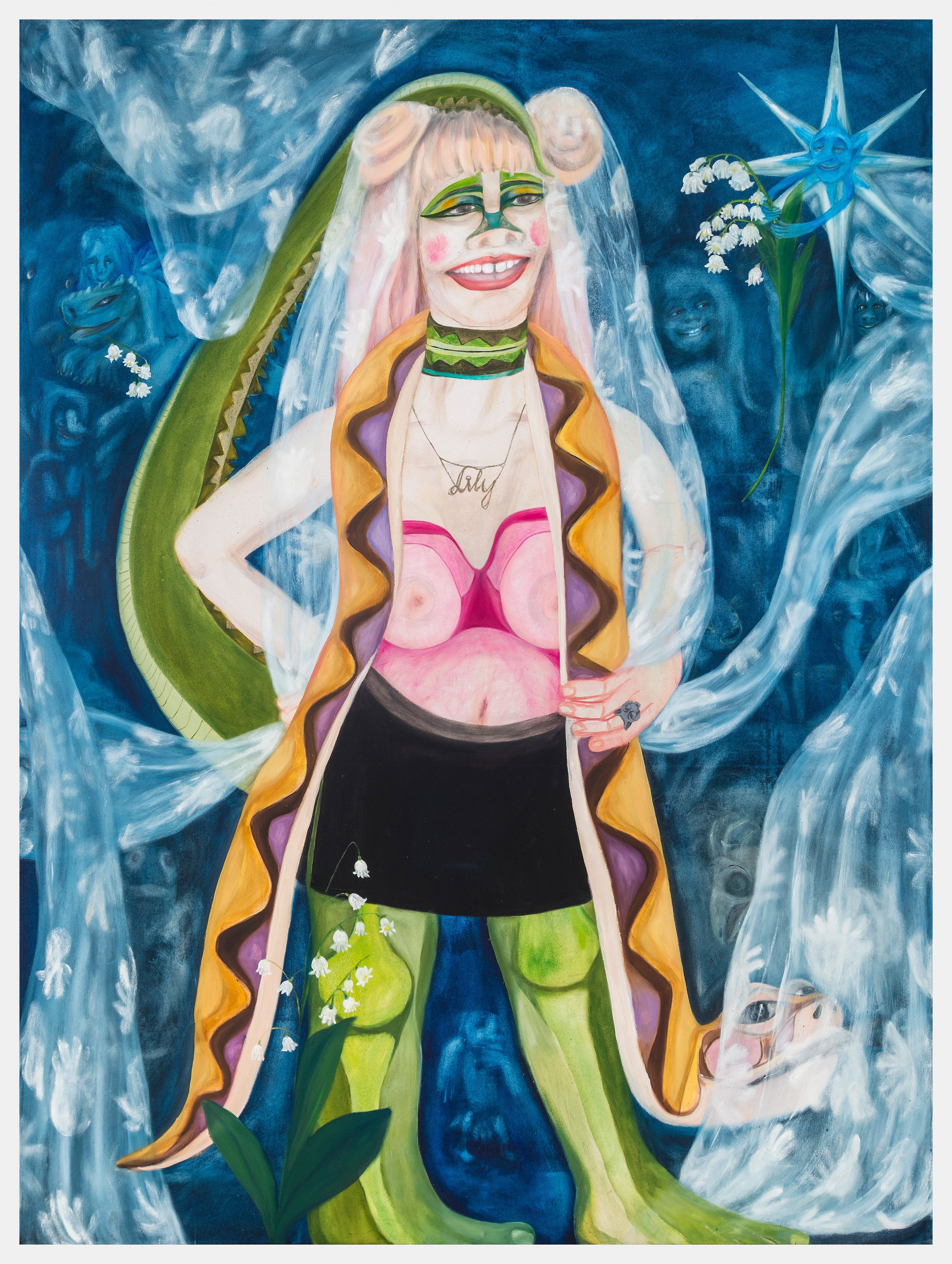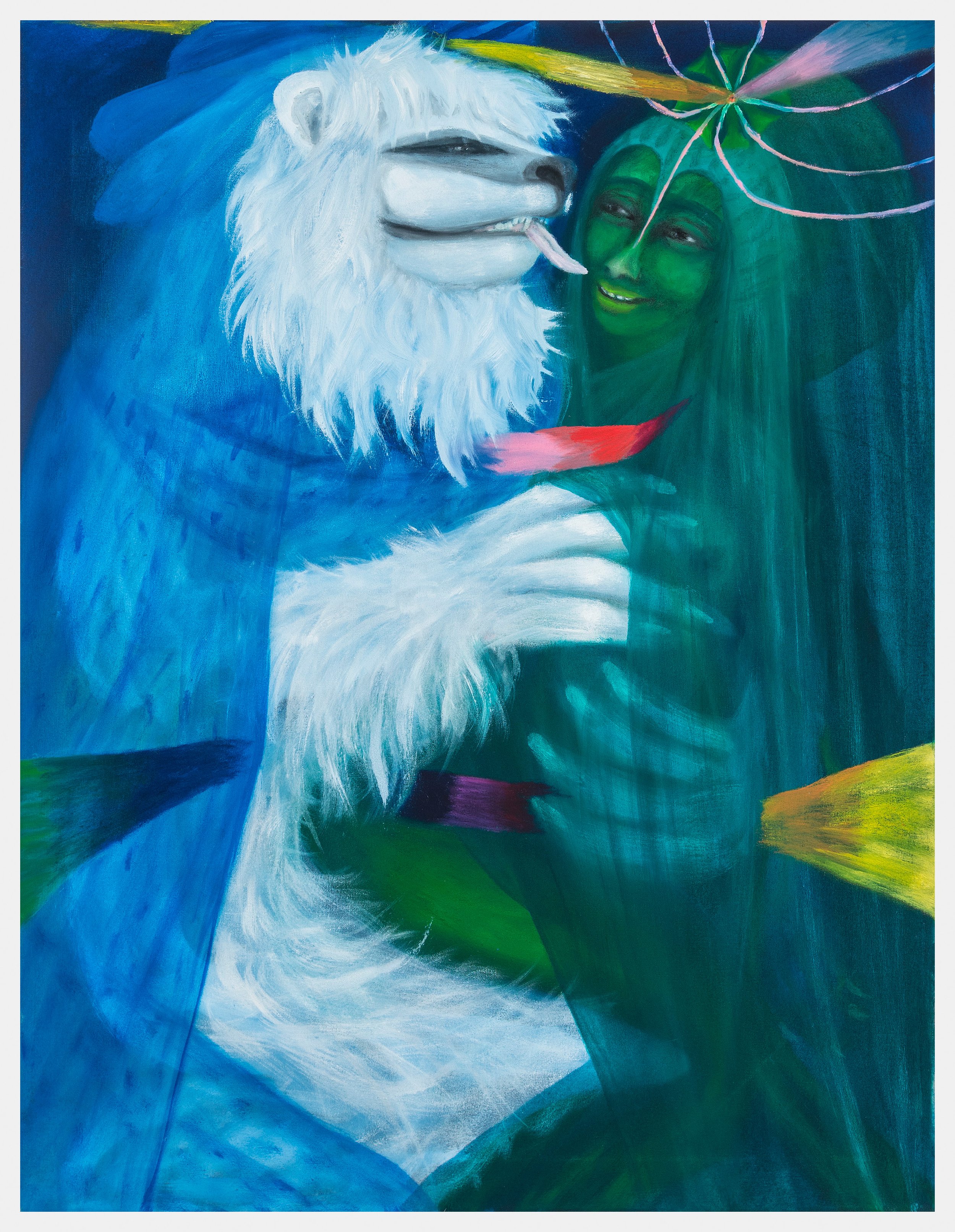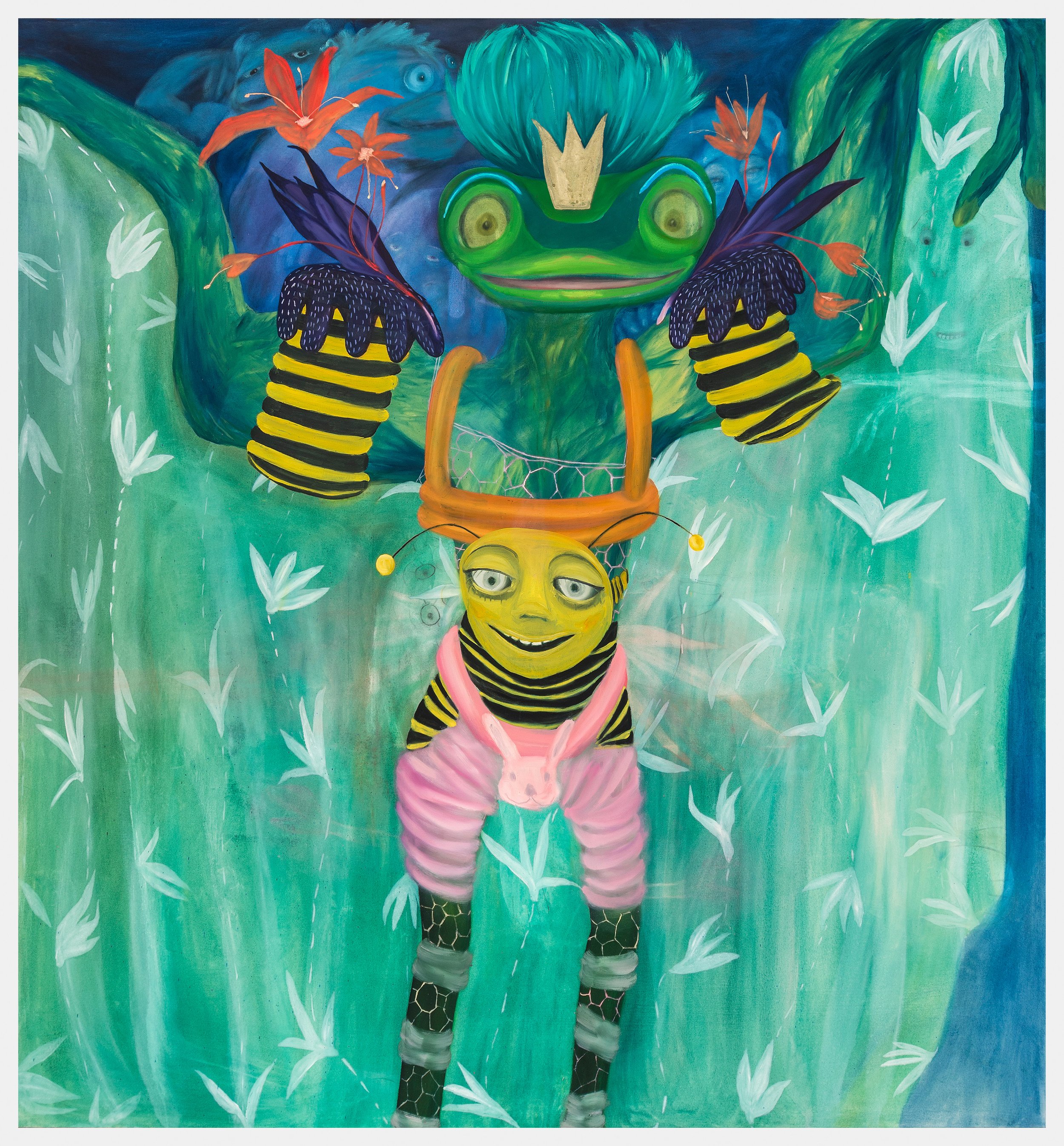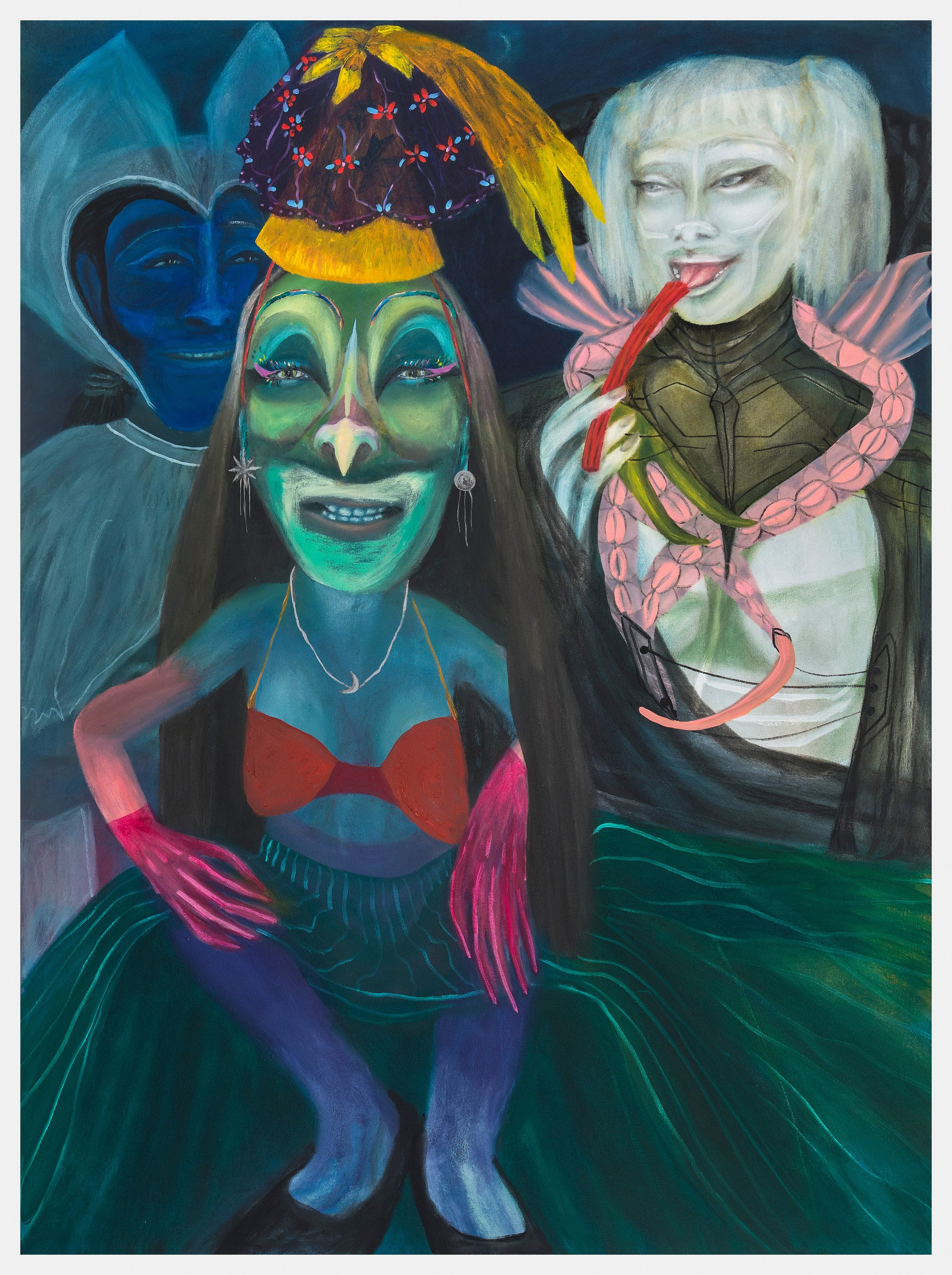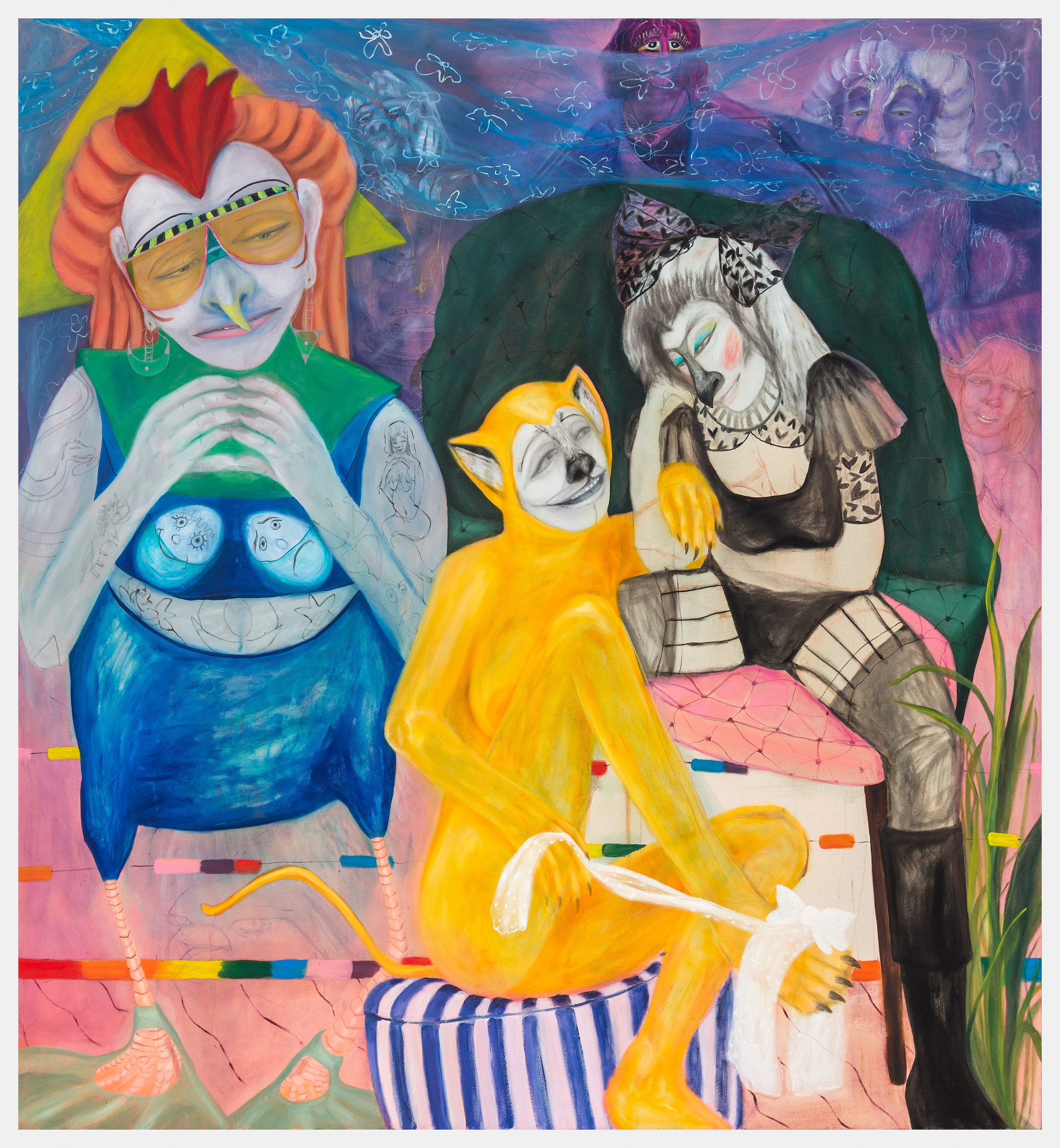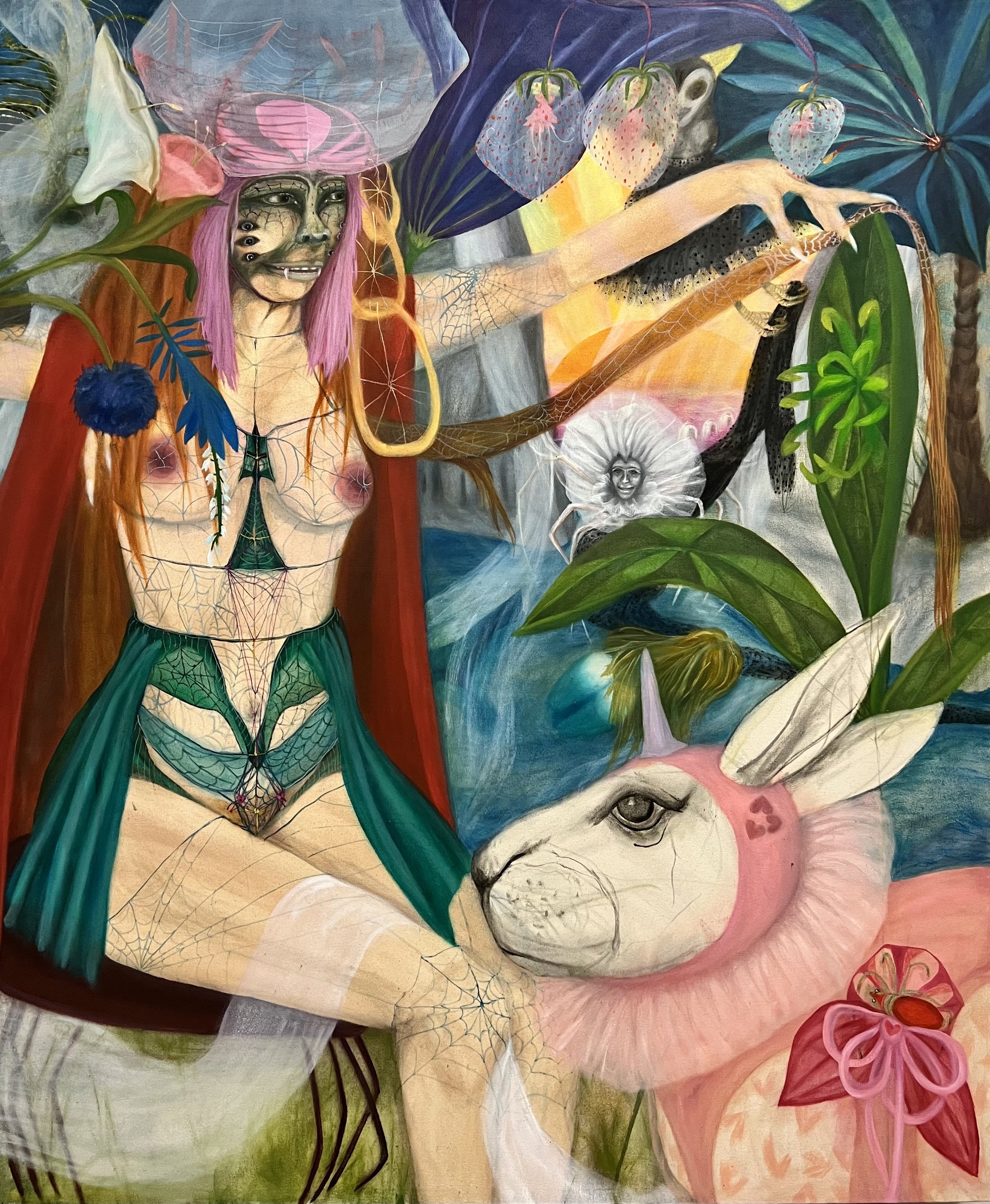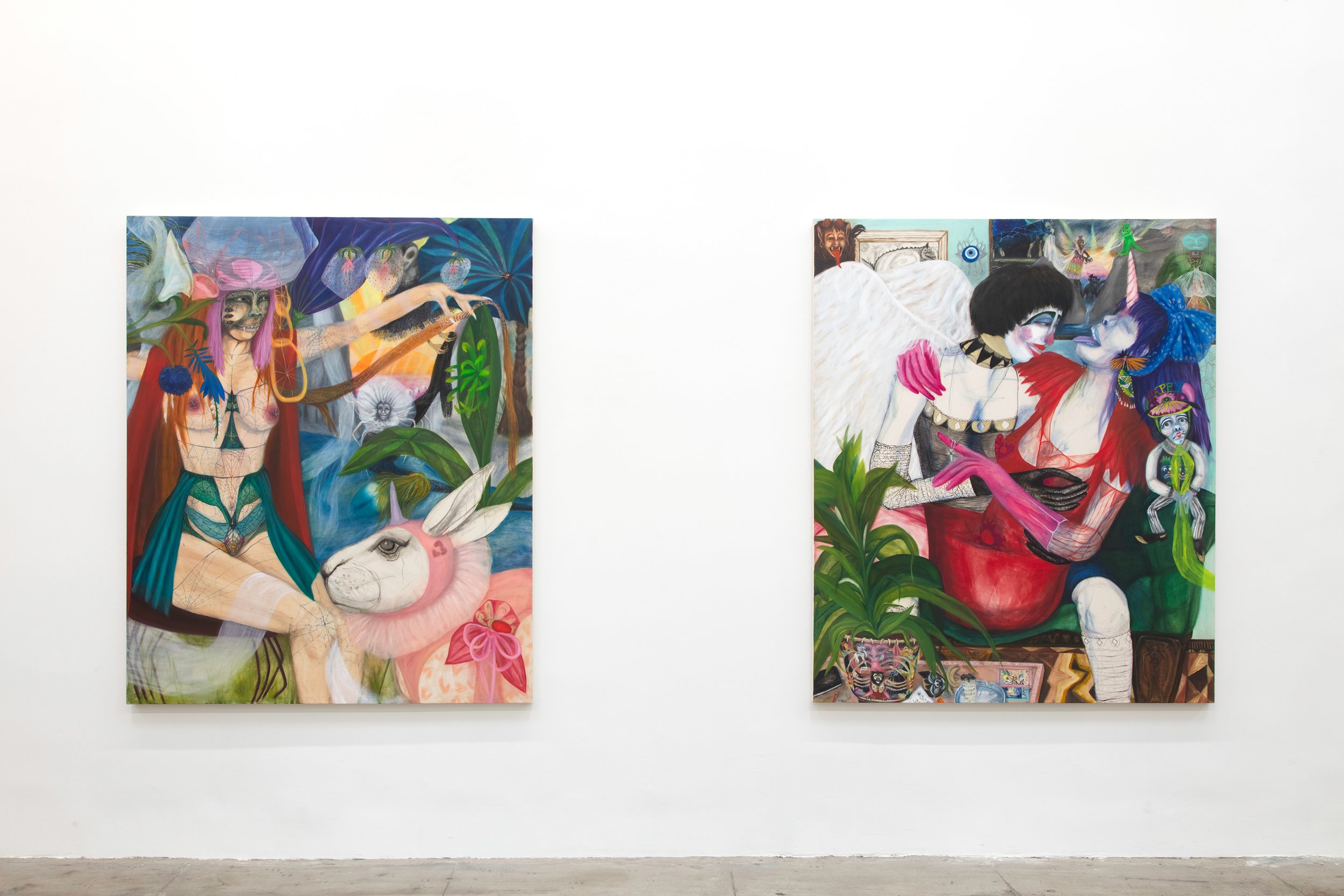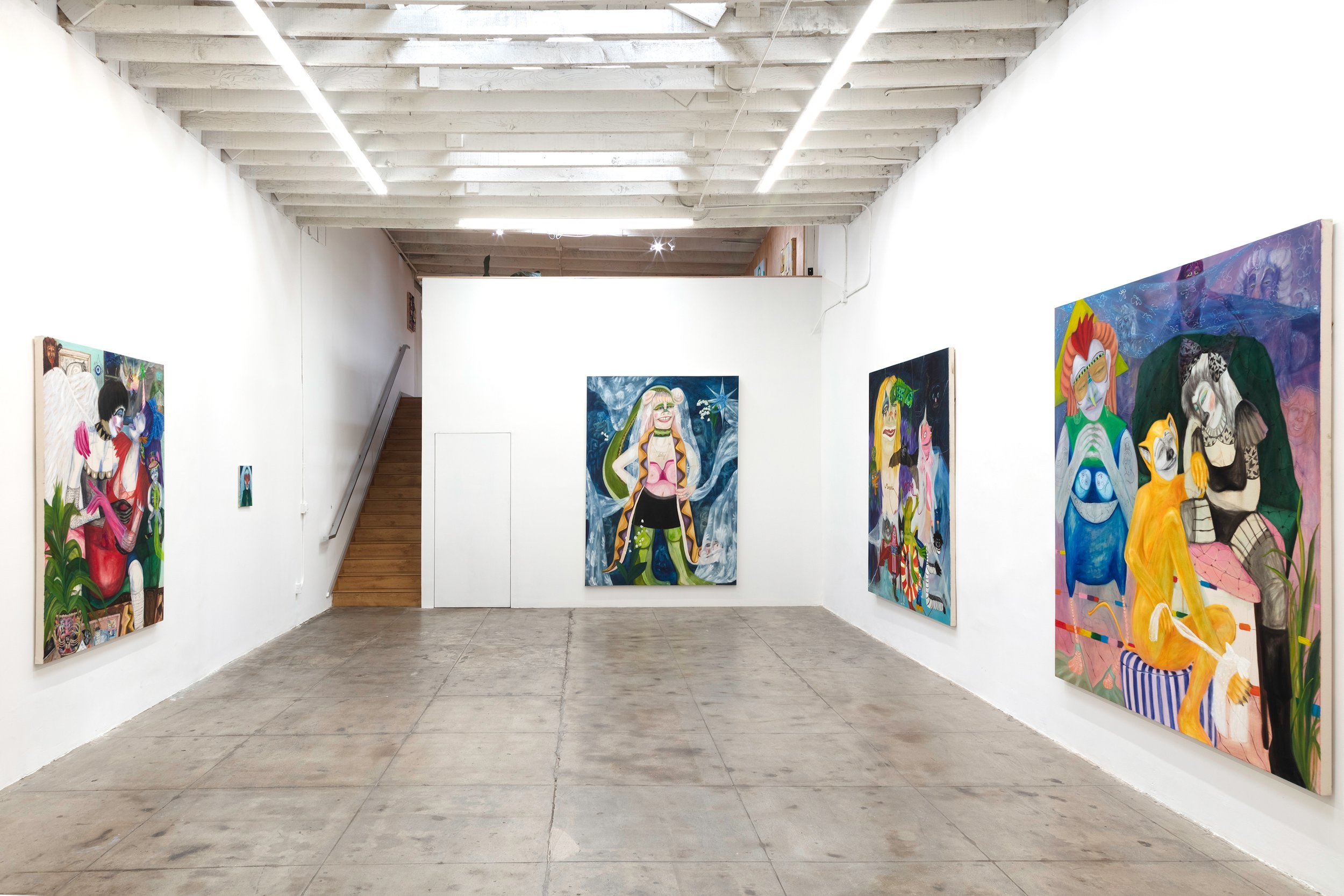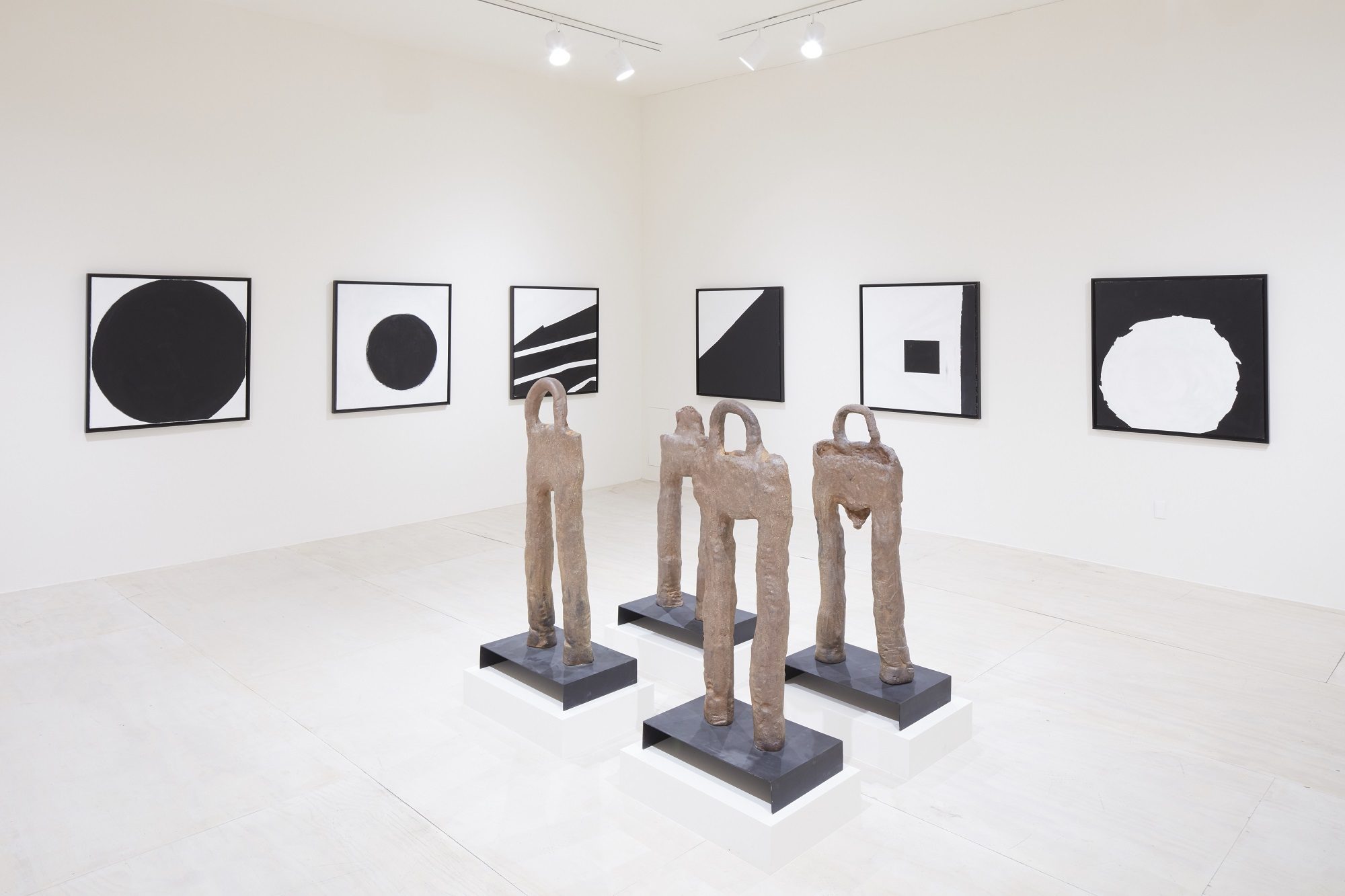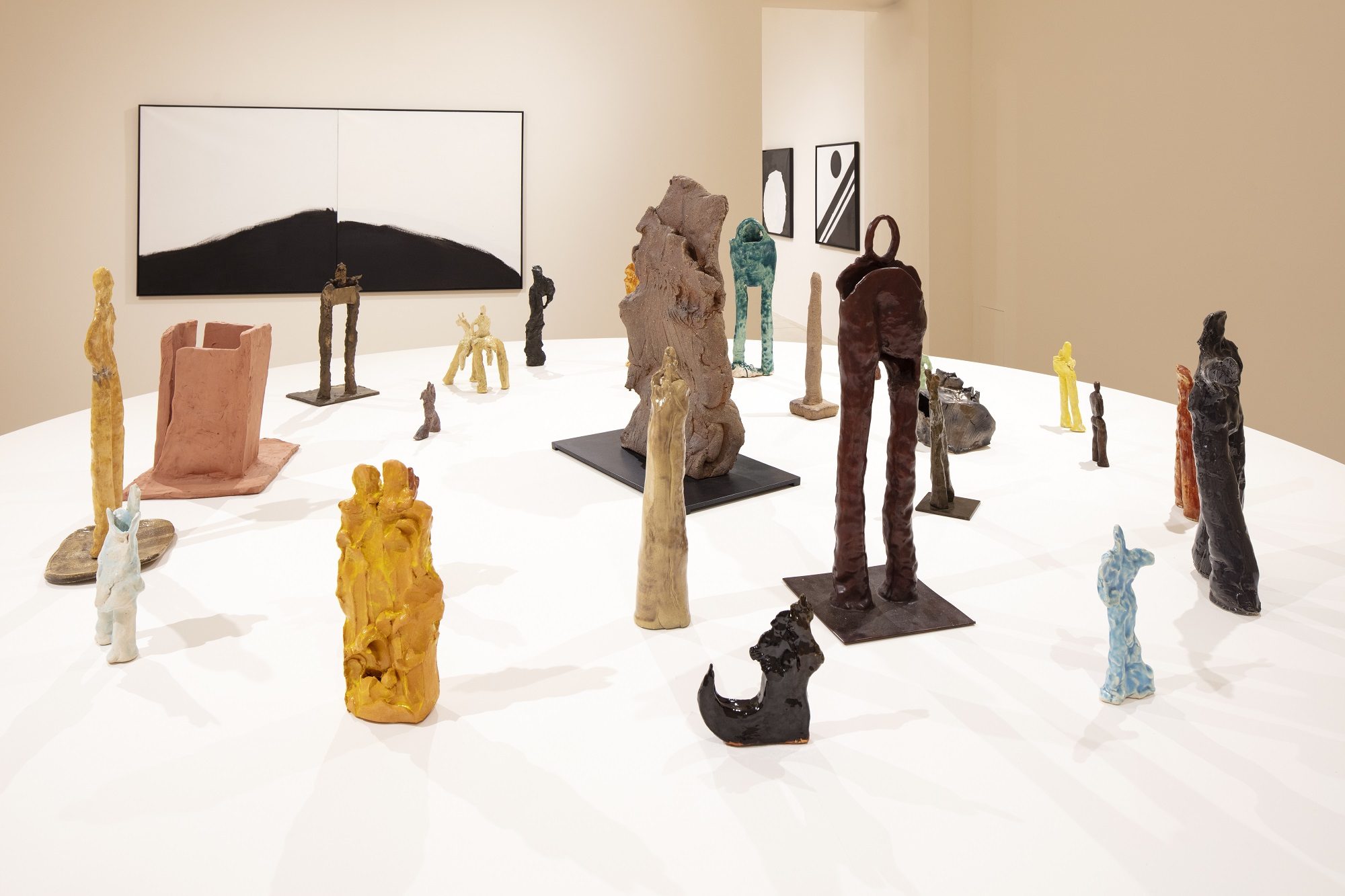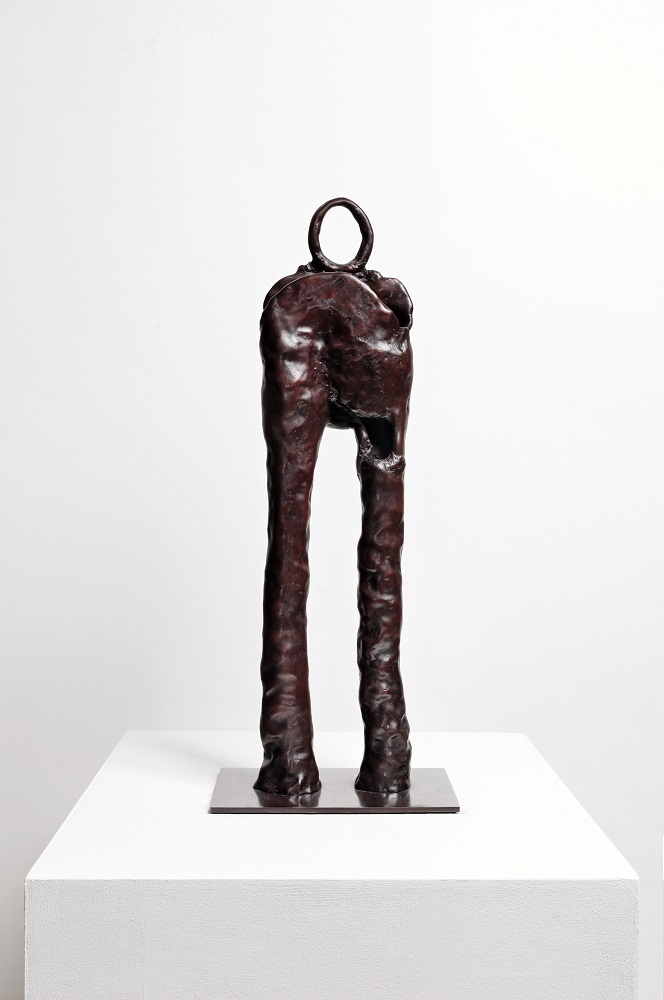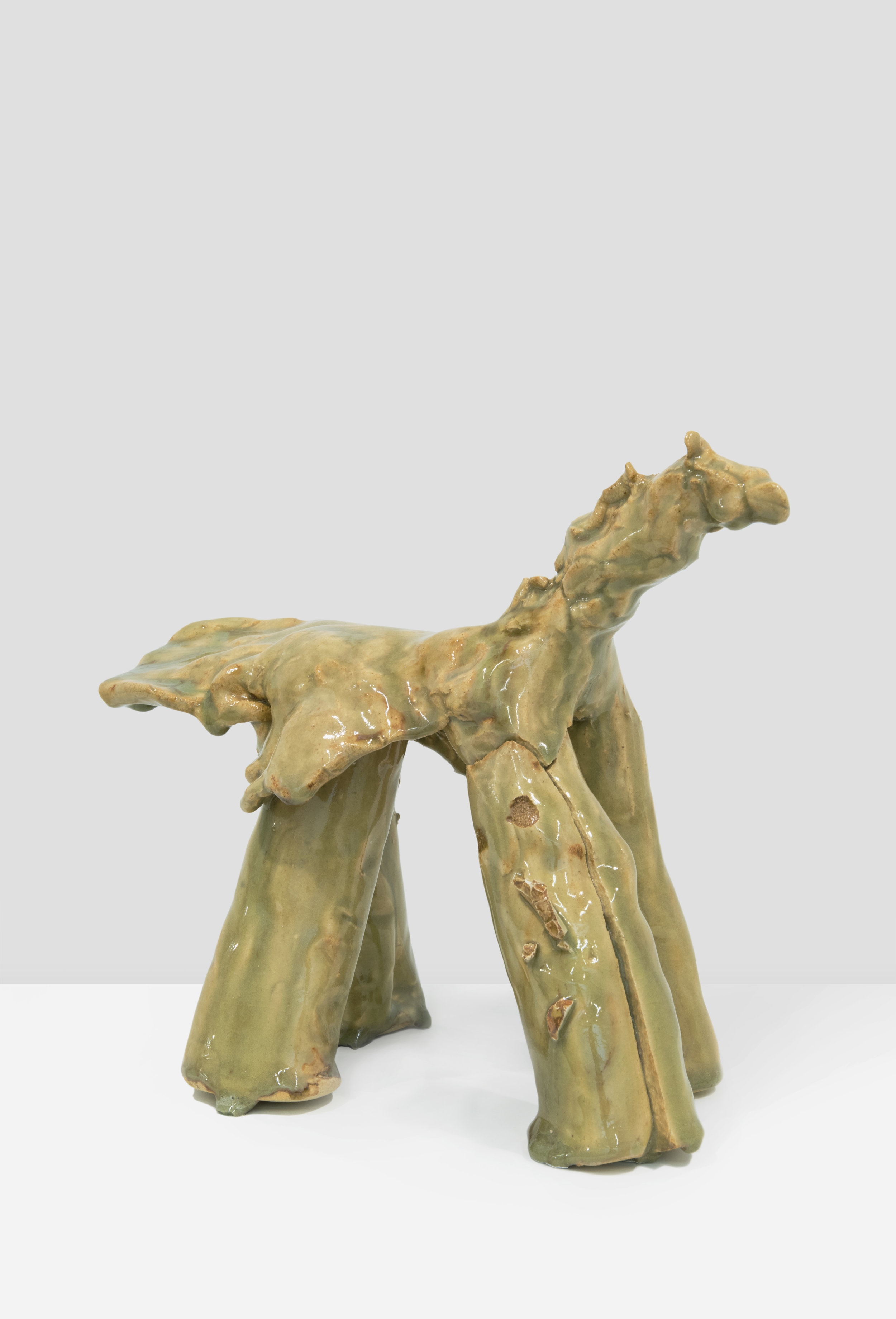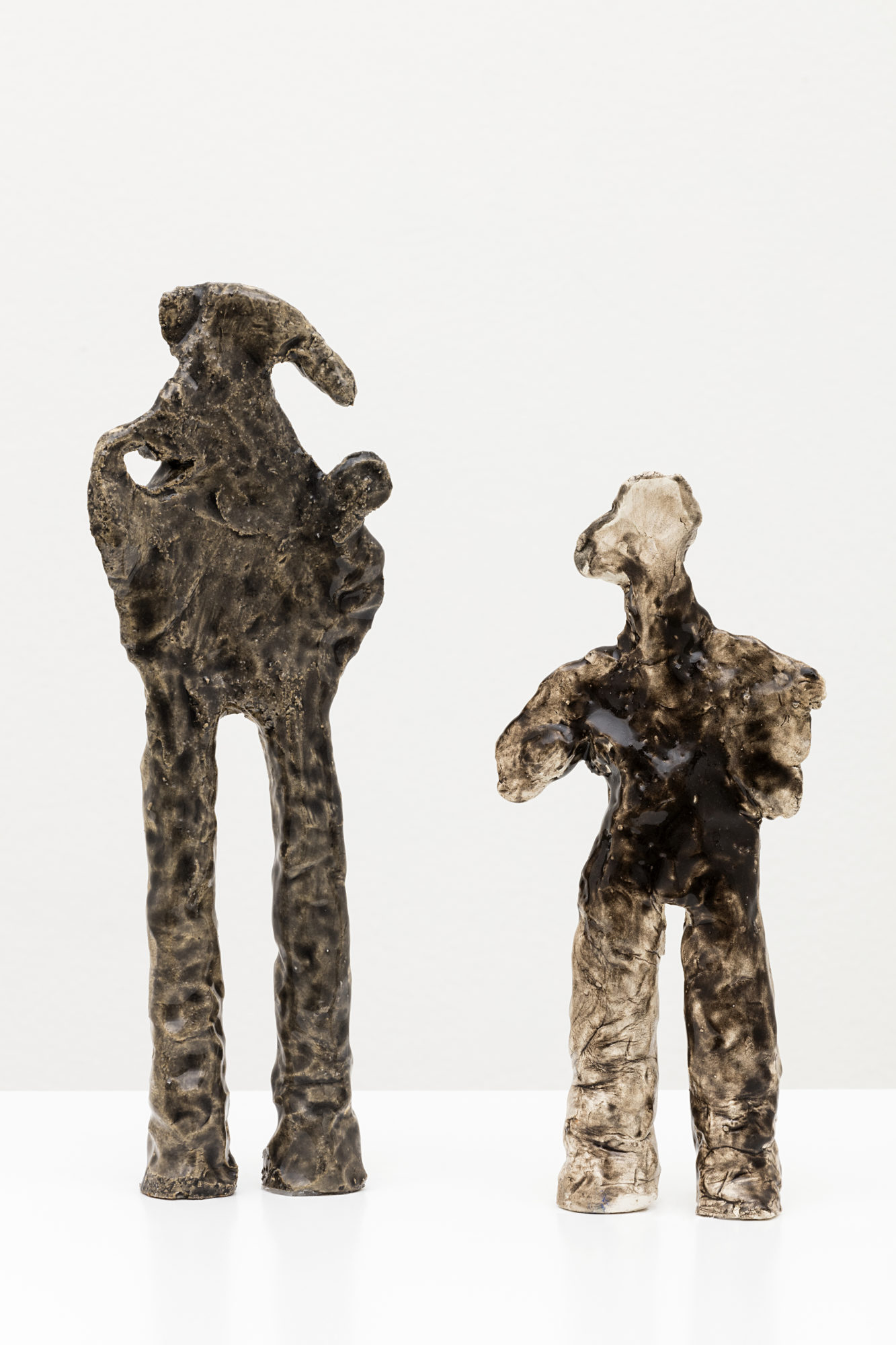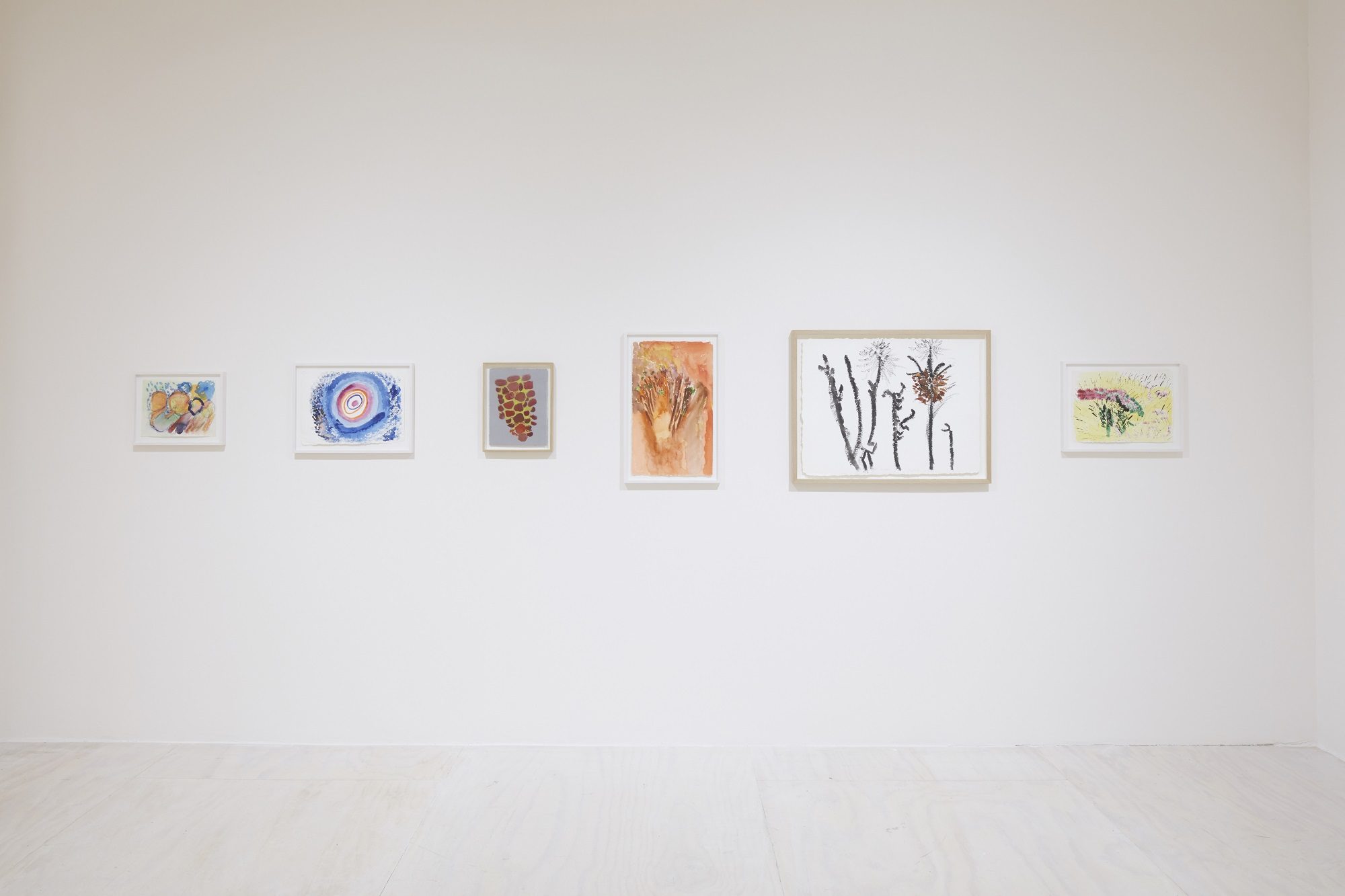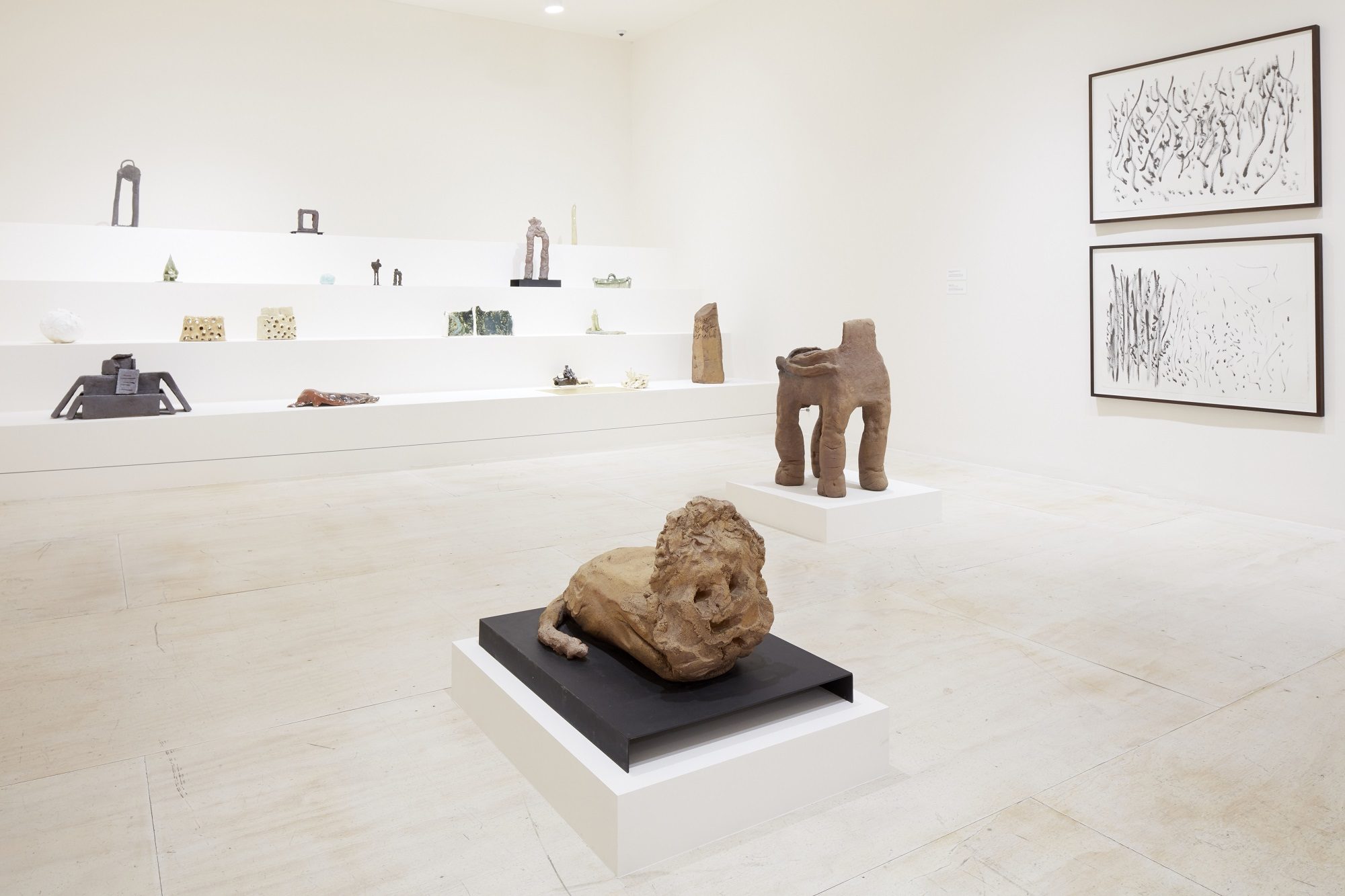top and earrings: Heaven by Marc Jacobs
The question of original sin has no relevance in Lima-based artist Wynnie Mynerva’s Book of Genesis. For their inaugural American solo exhibition curated by Bernardo Mosqueira, the artist will be presenting The Original Riot, opening tomorrow (June 29) at the New Museum with a site-specific installation that constitutes the largest painting ever to be presented by the institution, as well as a sculptural element that was surgically removed from the artist’s own body. The readaptation of both mythology and anatomy is central to Mynerva’s quintessentially plastic life and practice; one that finds itself in a constant state of radical change. Painting and performance are a fluent oscillation of being as demonstrated in their 2021 exhibition Closing to Open at Ginsberg Gallery in Madrid when the artist had their vagina sutured three quarters of the way shut, allowing only for the flow of their bodily fluids to function as necessary. The corporeal roles of masculine and feminine are constantly being subverted and abstracted in works that bleed, scratch, beguile, and thrust their way through the patriarchal canon with an air of wanton ecstasy. The binary creation myth was recently addressed in Mynerva’s first UK solo exhibition Bone of My Bones Flesh of My Flesh at Gathering London earlier this year, introducing many for the first time to the role of Lilith in Judaic and Mesopotamian folklore as Adam’s first wife who was created from the same clay (equal in nature) as her husband. Her pitiable fate varies from one myth to the next, but the creation of a second wife (Eve) from his rib remains consistent. The artist’s decision to remove Adam’s body from their own for The Original Riot demonstrates the power to readapt our personal realities at will. It is a reflection of the agency that we unwittingly deny ourselves when we allow allegory to shape our internalized perspectives. The following interview was conducted in Spanish and is presented here in its original form, followed by its English translation. Read more.


